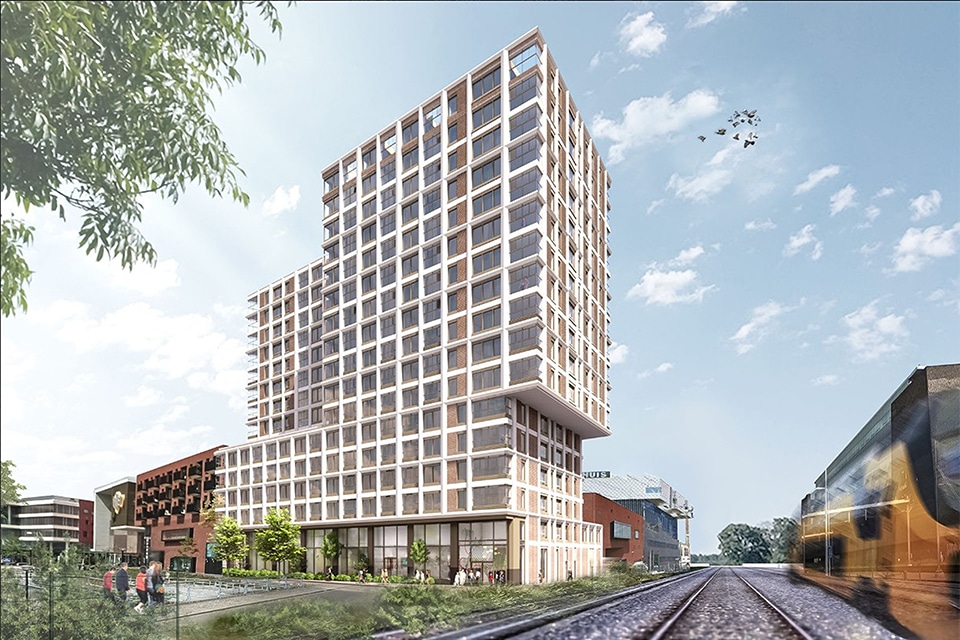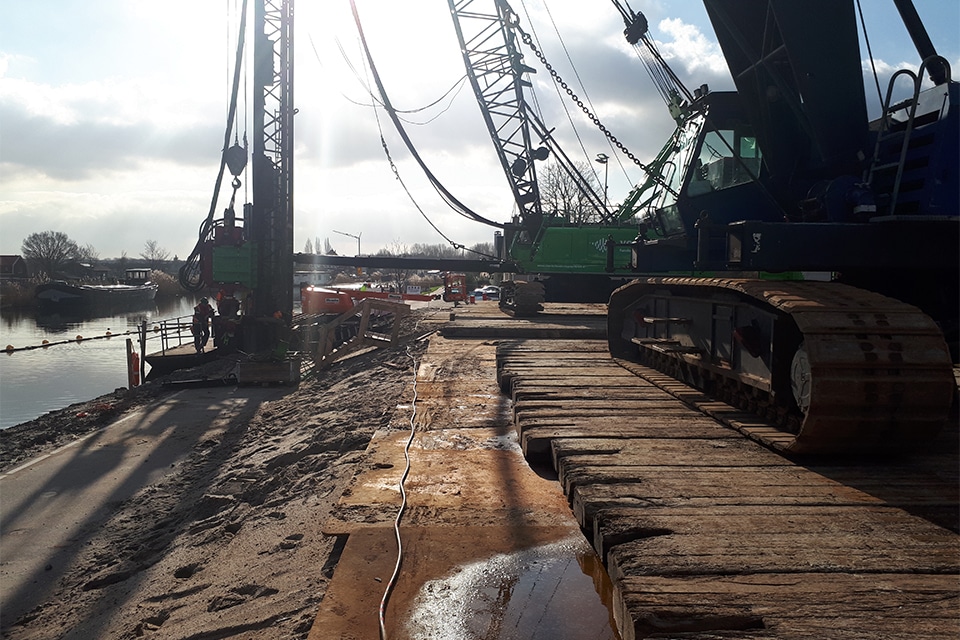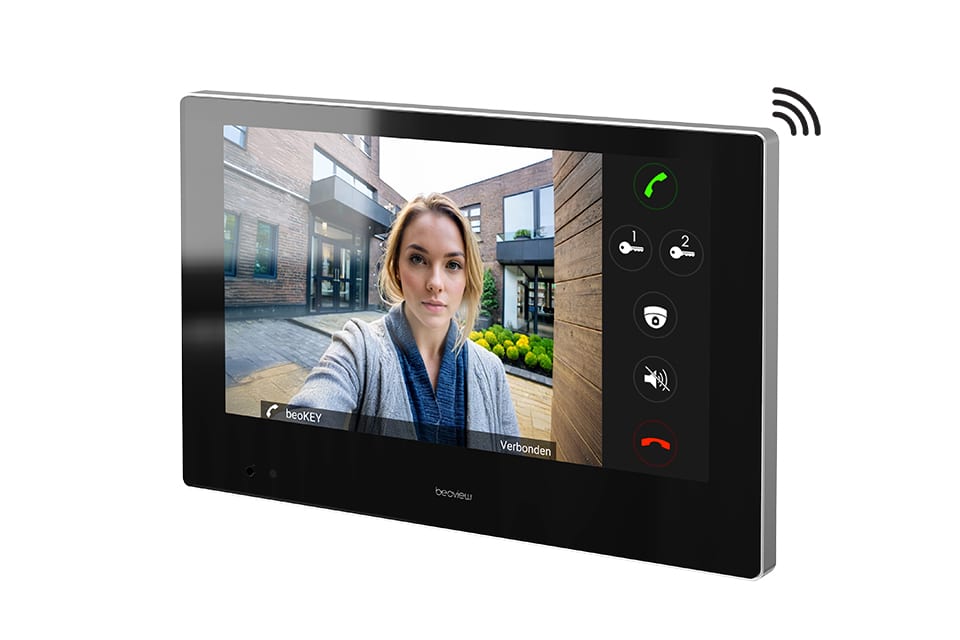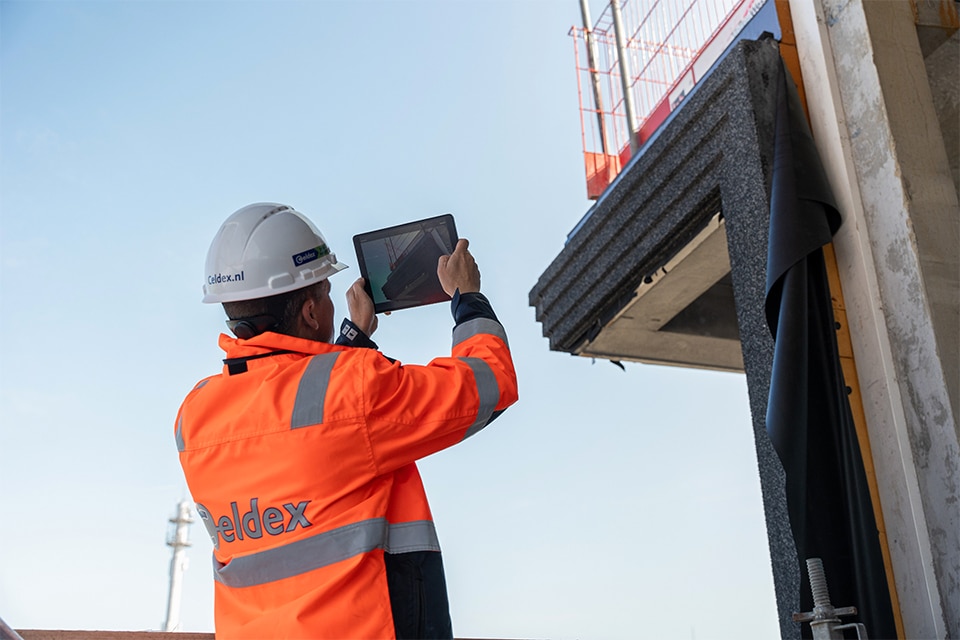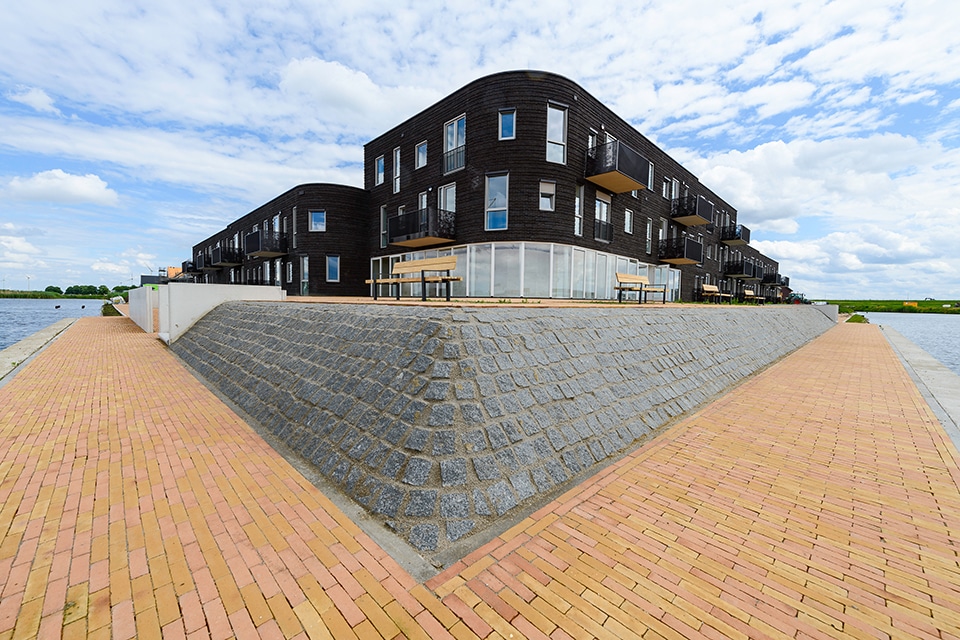
Green waterfront living
Anyone driving (or sailing) from Harderwijk to Zeewolde will encounter the Polderwijk, a gigantic new housing development with three thousand homes. In the Schelpenbuurt there, along the waterfront, Salverda Bouw is delivering an apartment building this summer with a nod to nature: Mosselhof.
If you sail the Blue Diamond, a route through the waters of Zeewolde, you automatically end up in the Polder neighborhood. Dozens of brand-new homes pass you by, but one stands out. Just before you reach the large Wolderwijd, you pass apartment building Mosselhof. With its black-blue staggered masonry, it stands out in the polder landscape. It is a project of a familiar trinity in that neighborhood: Salverda Bouw, housing corporation Woonpalet and the Zwolle architectural firm 19 the studio.
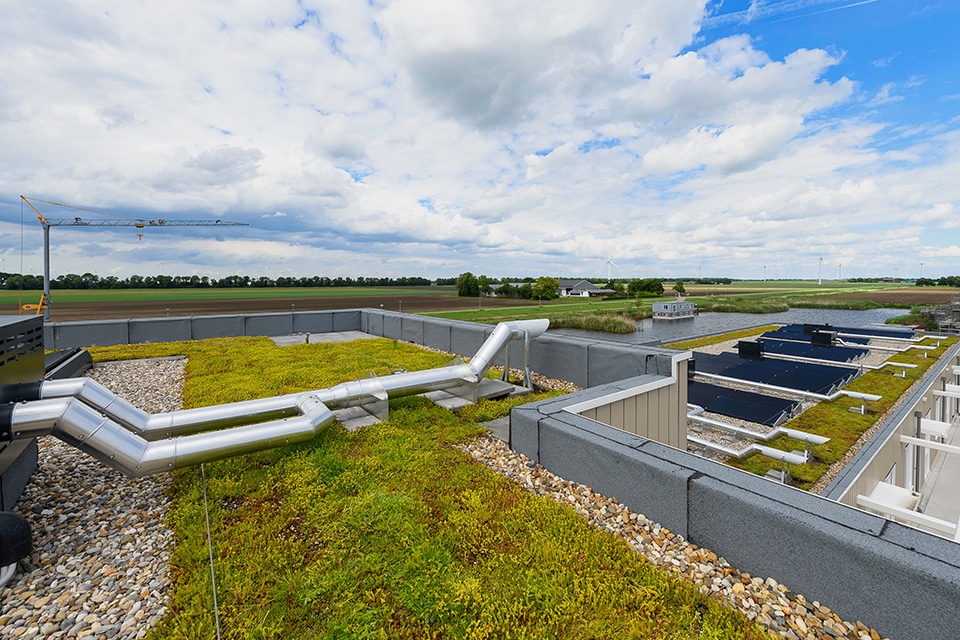
One building, one look
For the start of project Mosselhof, we have to go back to 2021. "The municipality of Zeewolde asked us to design a building with 29 apartments," Gerrit de Brake, project manager at Salverda Bouw, looks back. "With a wing with eighteen owner-occupied apartments and a wing with eleven social rental apartments. Because of the great location, we really wanted to go all out."
For the design, Salverda enlisted the help of 19 the Studio. "It was a nice challenge," says architect Ruben Klinkenberg. "To design a building with sale and social rent in a prominent waterfront location. And that commissioned by a builder with high ambitions." While sketching, one thing became immediately clear, he says. "We wanted one building, one look. To encourage encounters between residents, we chose two equivalent wings with one central stairwell and a public outdoor space along the water exit from the Blue Diamond to the Wolderwijd."
Like a clam
While puzzling with the two wings, Klinkenberg and his colleagues came up with the idea of the shell. "Everything fell into place with that. The eighteen owner-occupied and eleven social rental apartments together form the clamshell, with black-blue staggered brickwork, staggered windows and rounded corners. At the corner on the waterfront is a transparent "plinth. Behind it are the entrance, storerooms and communal space: the bright inside of the mussel. If you sail past it at dusk, it seems as if the shell is lifted up. A nice connection between the waterfront and the green courtyard of the apartment building."
The design caught the eye not only of Salverda and Woonpalet, but also of the municipality of Zeewolde and its residents. "Mosselhof was hugely sought after," knows Stephany Hogeboom, buyer's supervisor at Salverda Bouw. "All the apartments were sold and rented in no time. And great fun: it attracted a mixed crowd. During construction, the new residents met each other several times. There too you felt the connection and equality between buyers and tenants, just like in the architecture."
Sustainable choices
For the construction of Mosselhof, the municipality of Zeewolde gave Salverda the Sustainable Top 11: eleven sustainable measures to implement. "We wanted to take that seriously," says De Brake. "We went even further than that Top 11. Salverda strives to make as many sustainable choices as possible during the construction process. For example, the initial plan was to build the entire shell of Mosselhof, including front and rear facades, out of sand-lime brick. In consultation with structural engineer Alferink van Schieveen, however, a more bio-based solution was chosen: concrete floors, sand-lime brick walls between the houses and timber frame
construction façade elements. Extra nice: that sand-lime brick comes from the nearby Veluwe Lake. So a sustainable, regional product."
And that's not all. To bring back the use of concrete, Salverda and 19 the studio chose not to cover the upper gallery. The walls of the storage rooms are made of reclaimed wood, as are the window frames and entrance doors to the stairwell, storage rooms and apartments. And each apartment has its own solar panels.
Place for all neighborhood residents
A brand-new apartment building in the middle of the polder obviously has to be nature-inclusive. Two ecologists studied which birds, mammals and insects fly, swim and crawl around the neighborhood so Klinkenberg could take them into account in the design. "The green roof cools the environment, catches rain and is nice for birds, butterflies and other insects," he explains. "The gravel on the roof is a nesting place for oystercatcher and lesser plover, among others. Swifts and bats can perch in the bricked-in nesting and bat boxes in the facade. And in the green courtyard there is an insect hotel for butterflies and wild bees and nesting boxes for tits and sparrows."
This makes the Mosselhof a fine accommodation not only for the buyers and tenants. De Brake: "In a short time, we all pulled an extraordinary apartment building out of the clay. Striking, sustainable and nature-inclusive. A place where it is pleasant to live, for people and animals. We are proud of that."
